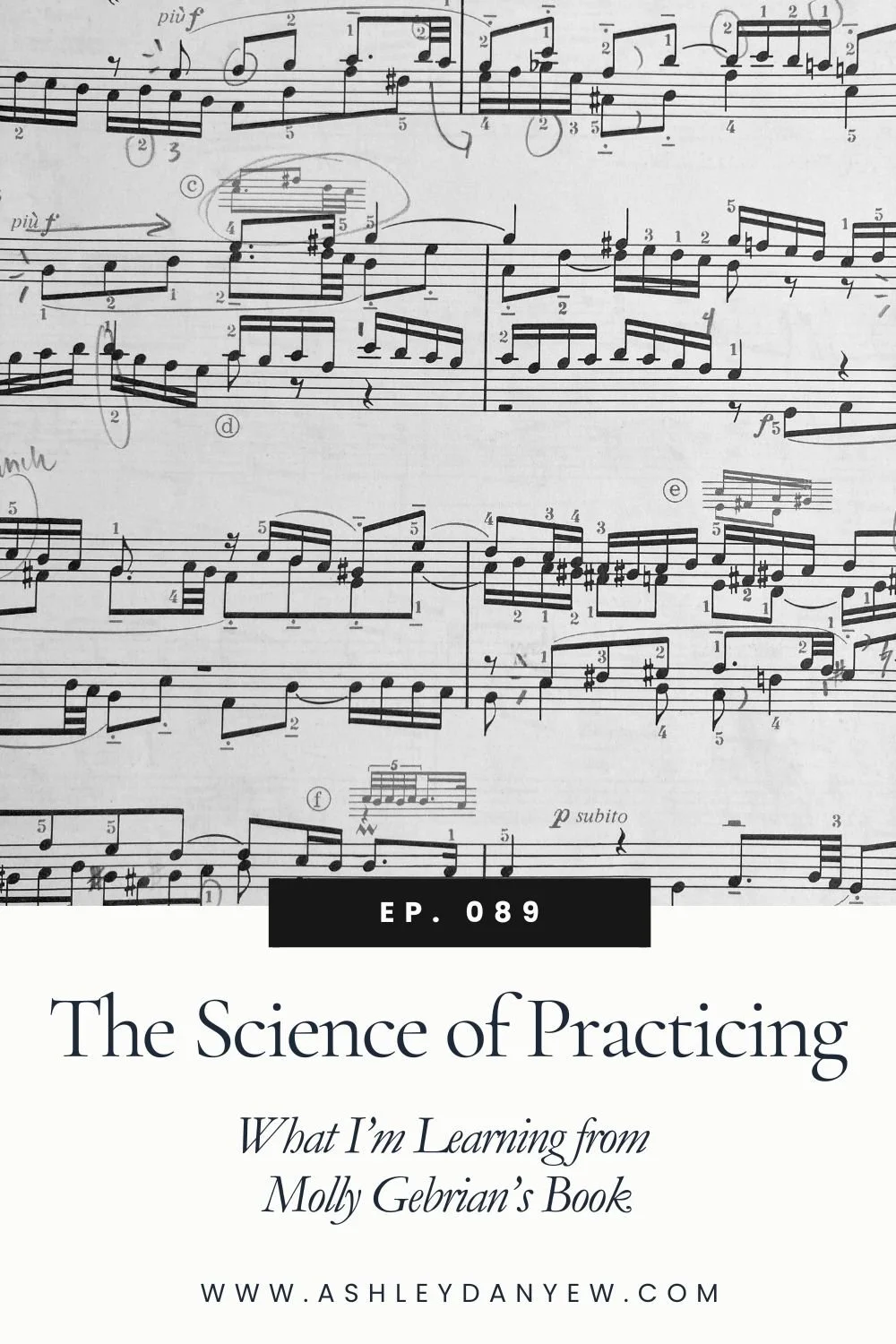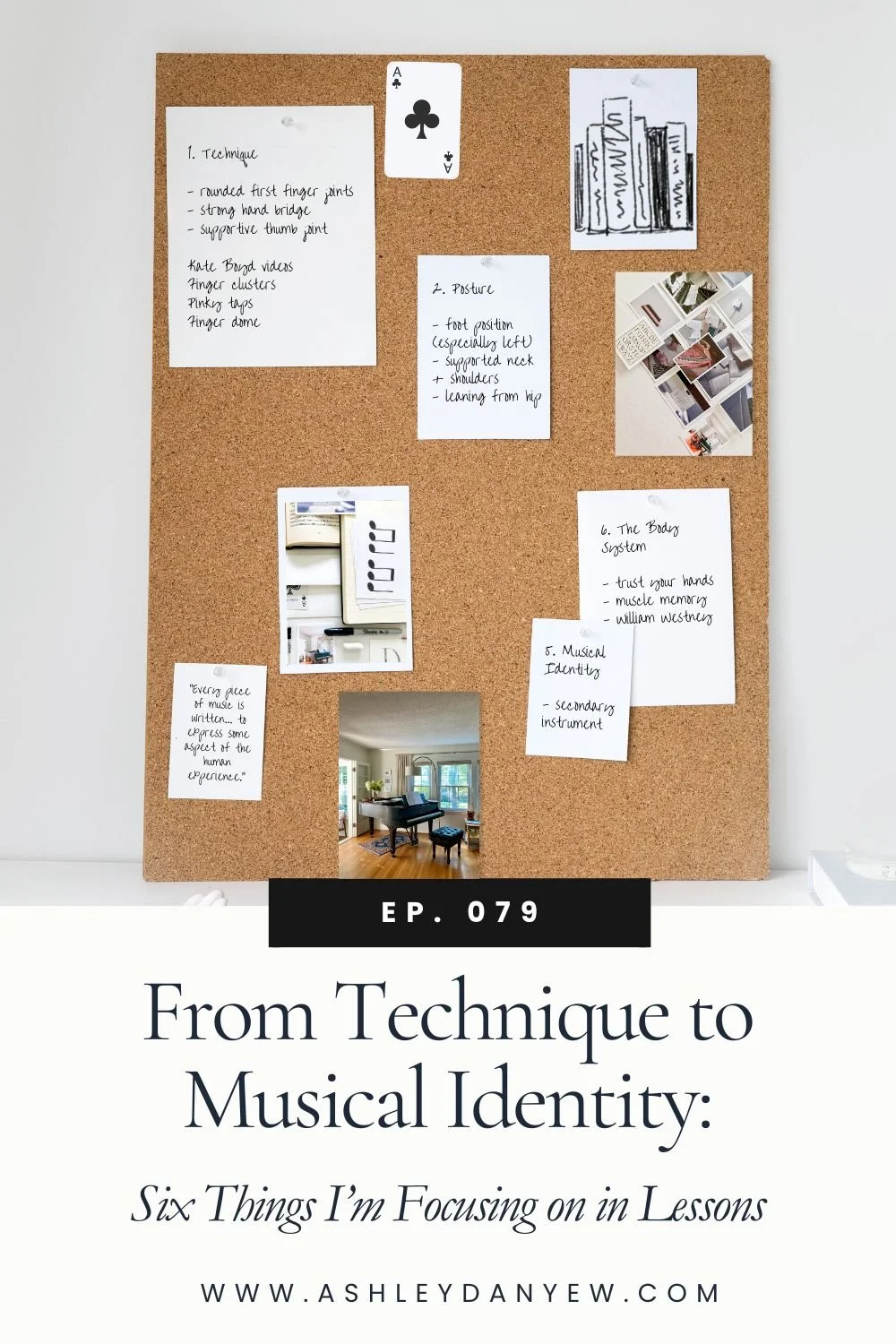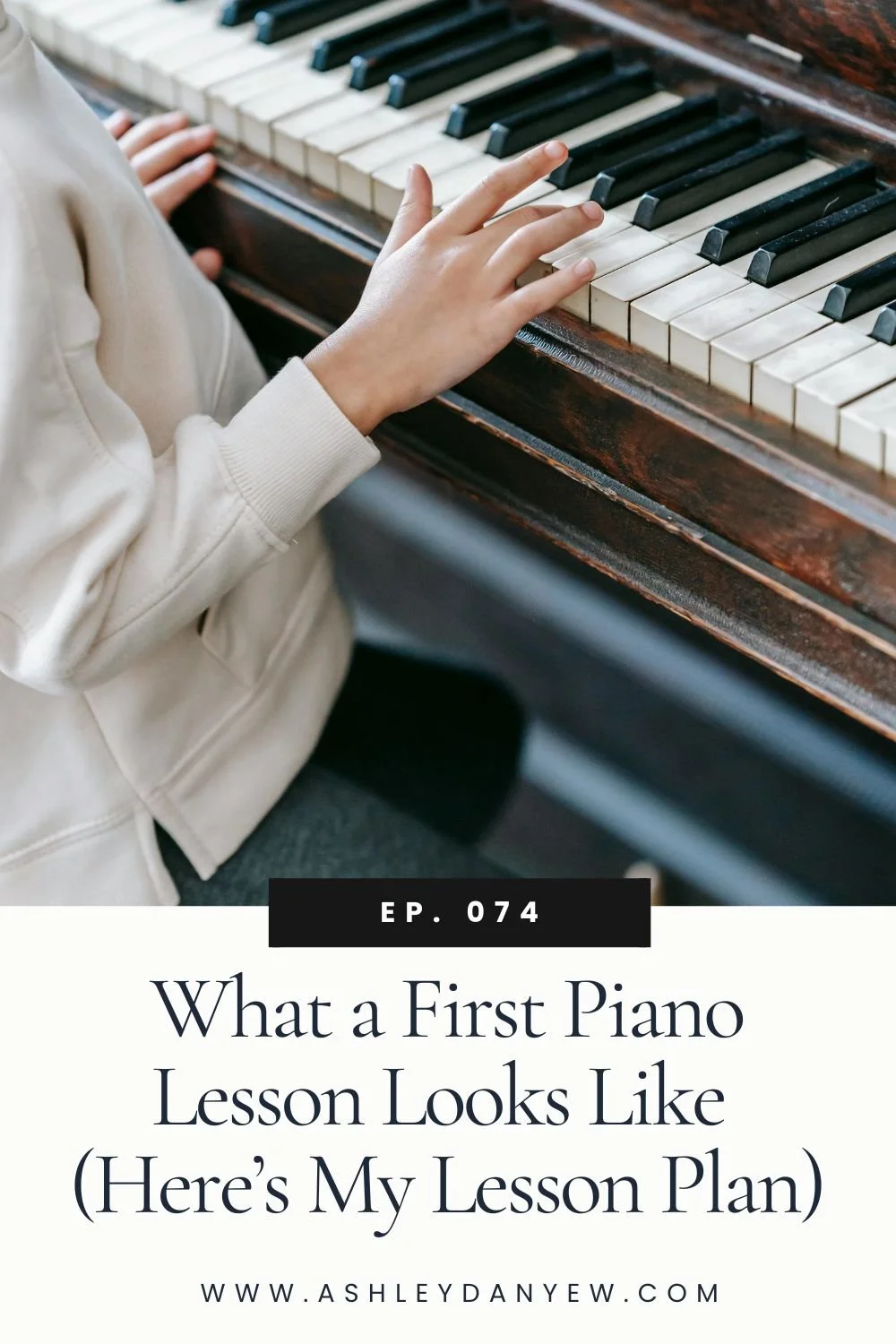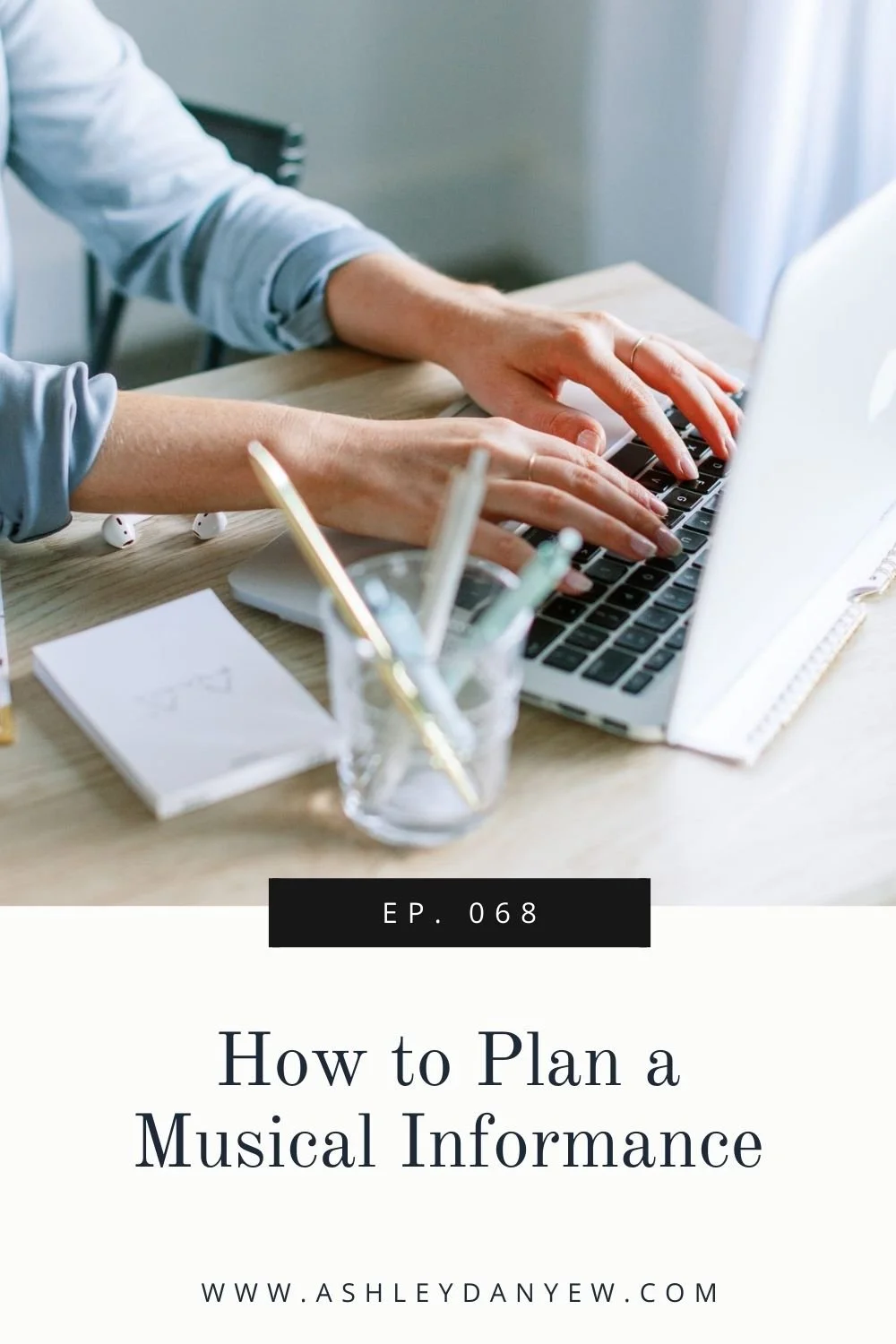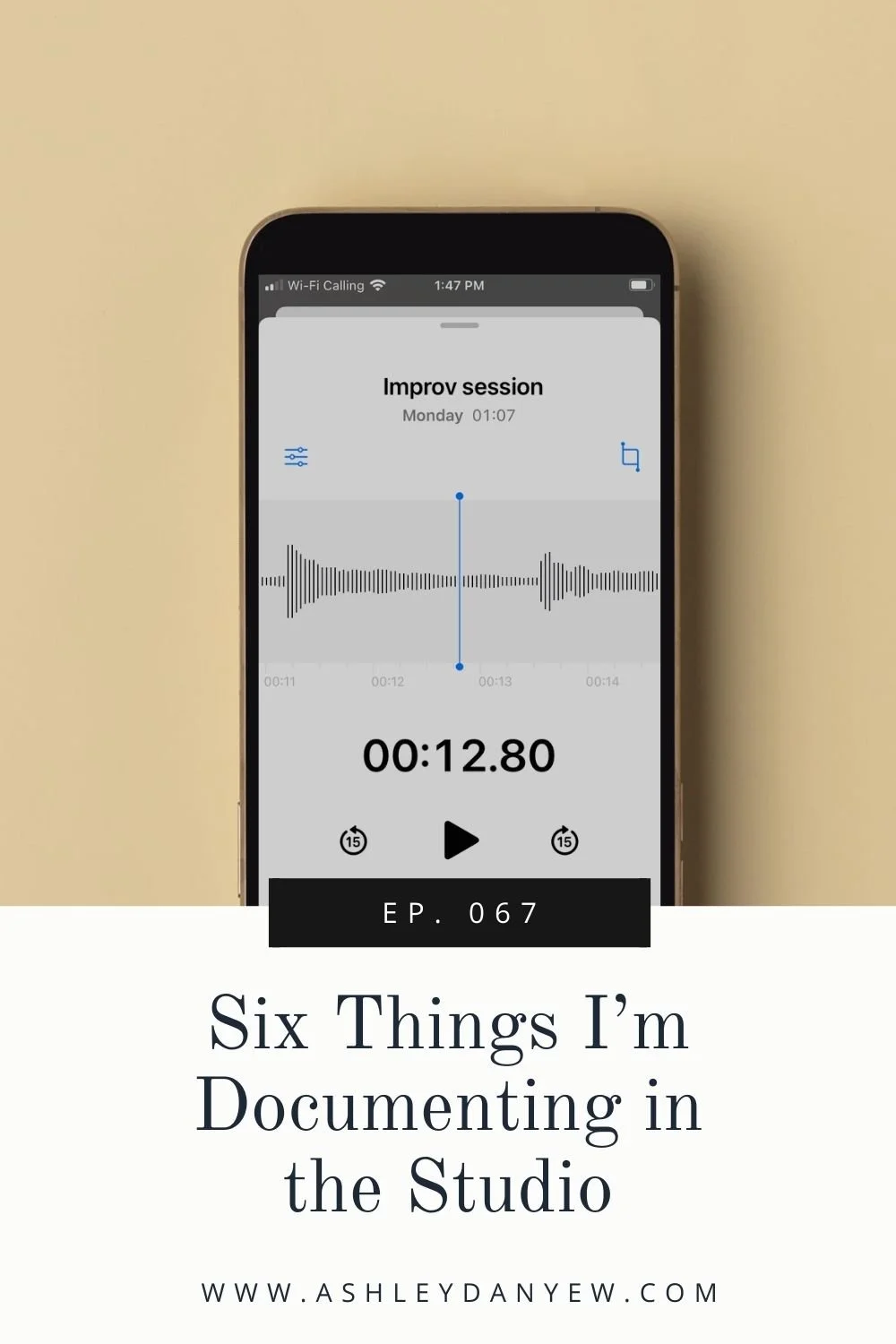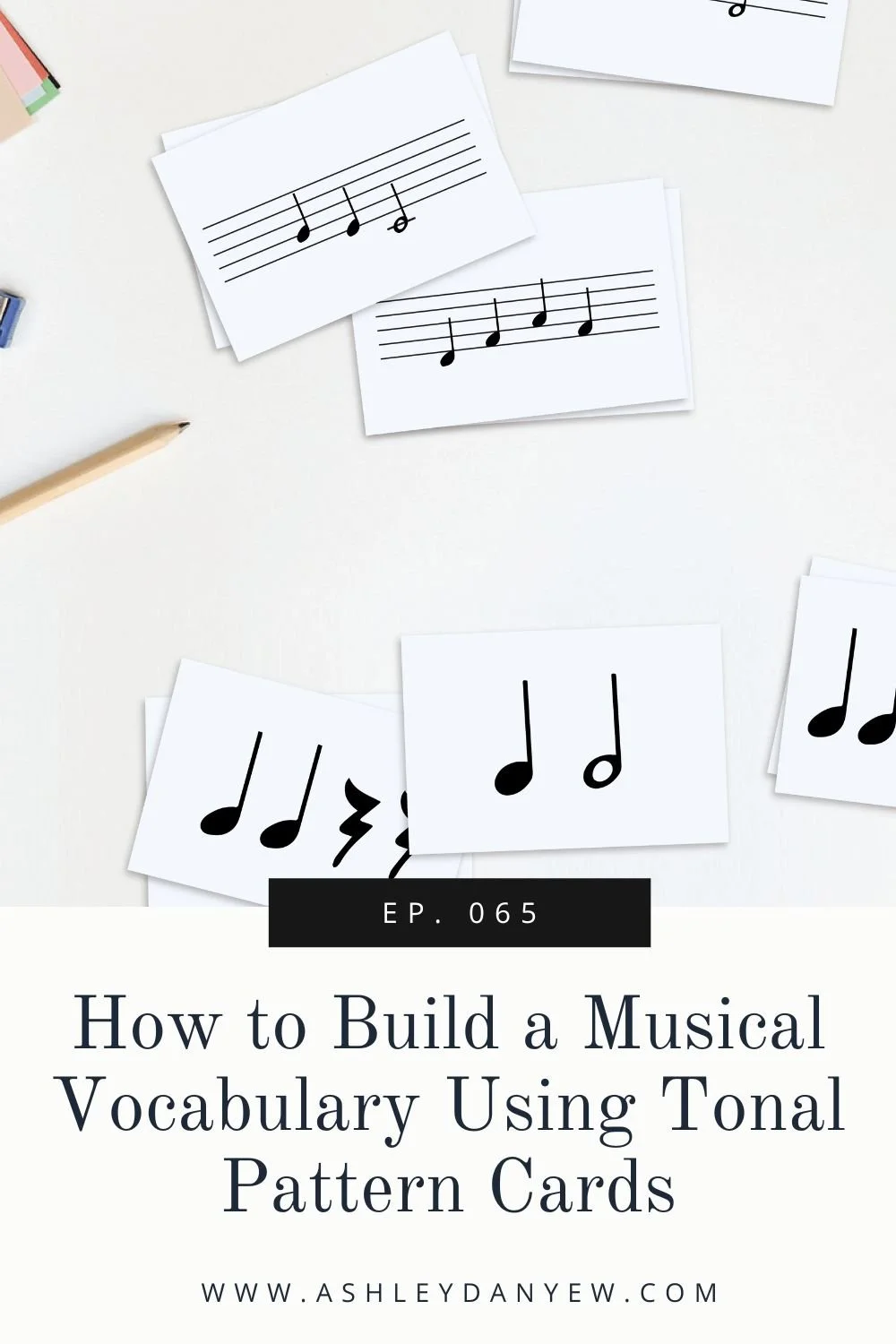Resources Mentioned
*Disclosure: I get commissions for purchases made through links in this post.
You know those moments when something just *clicks*? When something suddenly makes sense to you that was confusing before or you make a new connection or you realize you're able to do something you didn't know you could do.
Sometimes we call these a-ha moments or breakthroughs. These are some of my favorite things to observe in my studio: when a student recognizes a new musical concept, makes a new connection, or can do something independently that they couldn't do without help before.
I've mentioned before that I started keeping a teaching journal a few years ago. It's nothing fancy—just a note in Evernote where I jot down stories or conversations or experiences that happened in lessons that I don't want to forget. I try to capture the student's words as accurately as possible, so sometimes I'll write down the interaction in an email to myself or jot down a phrase they said on a Post-It note so I can add it to my journal later.
I've been looking back through my journal notes for the 2022-23 school year and reflecting on the a-ha moments and the learning that took place—those breakthroughs that are so exciting and motivating in the moment.
In this episode, you'll hear five short stories from my students, 1st grade to 8th grade, taken straight from my teaching journal.
Story #1: Discovering Musical Symbols
One of my 1st-grade students, I'll call her Lila, discovered one week early in the year that the rug in the music classroom where I teach on Tuesdays has music symbols printed around the edge.
"Are there any that you know?" I asked.
She looked around for a minute, then said, "Du!" and pointed to a purple square with a black quarter note inside. She went to stand on the square on the edge of the rug.
"Du!" I said back. "What else do you see?"
She looked around from where she was standing. "Ta-2!" she said after a moment, moving to stand on the half note. And "Du-de!" And "Roar-2-3-4!" she said running to each symbol.
"That's right!" I replied taking in this moment of pure joy and discovery.
"What do you need to make the Charlie Chipmunk pattern?" I asked. For those who may not know, "Charlie Chipmunk" is a rhythm pattern comprised of four quarter notes. This is one of the animal rhythm patterns presented in the method, Piano Safari by Julie Knerr Hague and Katherine Fisher.
Lila found the quarter note symbol on the rug again and we stepped the rhythm together. Then, we discovered how to make the Tall Giraffe pattern (two quarter notes and a half note), the Kangaroo pattern (a pair of eighth notes and a quarter note), and Roar-2-3-4 (a whole note).
Story #2: "I Think I Learned Something!"
One of my 5th-grade students, let's call him Simon, was working on "Beach Party" in the Faber 2B Piano Adventures Lesson Book last fall. For those who might not be familiar, "Beach Party" is a lot like "Heart & Soul"—I-vi-IV-V in the bass and a set of variations in the right hand. Simon was playing it for me in a lesson one week when he stopped and said, "I think I learned something!"
"What did you learn?" I asked.
"I think this is just a broken chord?" he ended it like a question.
"What chord is it?" I inquired.
Simon played the first three notes of the bass line: C-A-F, descending. "It’s an F major chord!" he exclaimed proudly. "That's right!" I replied. "I'm proud of you for recognizing that all on your own." We looked for other chord outlines in the piece in both hands. Then, we talked about the key this piece is in and how the left hand is outlining a chord progression: I-vi-IV-V.
Story #3: My Favorite Moment
Simon's older brother, let's call him Ethan, was working on Czerny's Study in D Minor at the start of the school year.
One week, when he had played to the end, I asked, "What's your favorite moment in this piece?"
Without pause, he said, "Measures 3 and 4," pointing in the score.
"What makes that phrase your favorite?" I asked.
"I think you can really hear the melody here," he said, playing the line again.
"Yes, in the left hand," I said. "This time, I want you to show me why that line is your favorite. Make it special." He played it again.
Then, I asked, "What is the most special moment or chord in this piece? What requires the most care?" He pointed to the end of the 3rd line. "Yes, that's what I was hearing, too," I said. "This moment right here, when the crescendo peaks and we turn to the diminuendo. This chord—there's something special about it." I searched for an analogy. "It's like flying a plane and turning and right at this moment, this chord, there's a moment of weightlessness or lift as we begin the descent. Something like that," I said, demonstrating. "And you could even take a tiny bit of extra time here as you make that shift. I'm not sure if that's the best analogy."
"It's like a swing," he said.
"Yes!" I exclaimed. "Exactly like that. That moment of lift—weightlessness—at the top and then swinging back down. Play it like that." And he did.
Story #4: From Audiating to Artwork
Last year, one of my 1st-grade students was playing with rhythm cards in his lesson. Let's call him Aaron (you met him back in Ep. 051 - The Pokémon Piano Lesson). We were setting up rows of four patterns and pointing and counting them. When I asked if he'd like to rearrange the cards to make a new series, he spent a long time searching for just the right patterns and putting them in just the right order.
I have to admit I was growing a little impatient because I had hoped to do a few more of these mixed-up rhythm-reading examples before moving on with our lesson, but I soon recognized that he was audiating the rhythm of "Mary Had a Little Lamb" and putting the rhythm pattern cards in an order that matched. We were one card short, but he was able to point and count the rhythm successfully.
During his older brother's lesson, Aaron sat in a chair near the piano drawing on a piece of paper on top of his piano book. I glanced over at some point and recognized that he was drawing a picture about the song—Mary, a little red schoolhouse, and a white fluffy lamb.
A few minutes later, he tapped me on the shoulder and whispered, "Can I borrow those cards?" pointing to my stack of rhythm pattern cards.
I handed him the stack quietly and said he could look at them but please don't draw on them. I observed throughout the rest of the lesson as he recreated the rhythm for the song, laying out the cards in a long row, as he had done on the floor during his lesson, and carefully copied the rhythm onto his artwork.
Story #5: Music and Math
Last week, I saw one of my rising 2nd-grade students for a lesson. I'll call her Ada. We're halfway through the Piano Safari, Level 1 book and just starting to get into pieces in 3/4 time. The time signature is there, but we haven't formally discussed it, just moved to the meter, pointed and counted, clapped and counted, etc.
At the end of her lesson, we talked to her dad, sharing what we worked on in our lesson and what Ada is learning. "That's a lot of music theory," her dad said. He's a math teacher, so we started talking about all the correlations between music and math.
"I don't know why more people don't use music when teaching fractions," he said. "It's such a practical illustration. And ratios, too."
"What's a ratio?" Ada said, looking up from her lesson book, open on her lap. "It's when you compare two things that are different, like how tall I am vs. how tall you are," he said simply.
"Oh," she said.
"Or when we compare a quarter note, a ta, which gets how many beats?" I asked.
"One," she replied.
"Right, and if we compare that with a half note, a ta-2, which gets how many beats?" I asked.
"Two," she said.
"Or this note," her dad said, pointing to a whole note in her music. "Is that a whole note?" "It's a Roar-2-3-4!" she said, smiling.
Her dad also mentioned the math involved in rhythm. I asked Ada, "What do these lines do?" pointing to a barline in one of her newest pieces in 3/4 time.
"They make the patterns," she said.
"Yes, and how many beats are in each of these patterns?"
"Four," she replied quickly. "No, three."
"Yes, and see this big three at the beginning of the piece? The top number tells us how many beats are in each pattern, each measure."
"Most of them are four," she said in a matter-of-fact voice.
"That's right," I said. "Most of your pieces have had four beats in each pattern, but you've played a few things in 3. She was already flipping back through her book, page by page. "Four, four, three!" she said, discovering another piece she had recently finished in 3/4 time.
Conclusion
It's been fun reliving these moments from the studio this year and reflecting on the quiet moments of learning and discovery that took place. I hope this episode inspires you to look for the a-ha moments in your music studio or classroom and observe what your students are experiencing in the moment.



